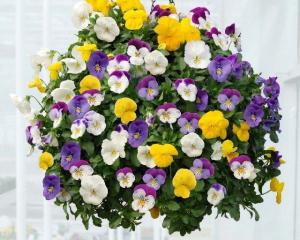Their focus hasn't been the building autumn colour on the maples as you might expect, but the exotic-looking blooms of Colchicum ''Waterlily'' bursting through the soil in dense clumps near the lower exit.
The common name for Colchicum is autumn crocus because although several species of Colchicum flower in spring, the majority flower in autumn and the most commonly grown is C. autumnale, which flowers through March to April.
They do resemble true crocuses, but colchicums differ in having six stamens compared with the crocuses' three.
Most Colchicum species' leaves appear and feed the corm through spring and die off in summer before the blooms appear in autumn, compared with most crocuses which produce both flowers and foliage in spring.
Colchicum ''Waterlily'' is a hybrid between C. autumnale ''Alboplenum'' and C. speciosum ''Album''.
Despite the fact that both parents have white flowers the resulting hybrid has long narrow, lilac-pink petals opening to create fully double blooms reminiscent of water lilies.
Autumn crocuses prefer moist open sites in the garden with enough room so that their foliage has room to fully develop - up to 35cm long - without crowding surrounding plants.
For those with an interest in homeopathy, an interesting yet bizarre footnote is that colchicum extract is used to treat, among other things, gouty paroxysms and those disturbingly recurrent dreams of mice!
• Doug Thomson is curator of the Rhododendron Dell at Dunedin Botanic Garden.










